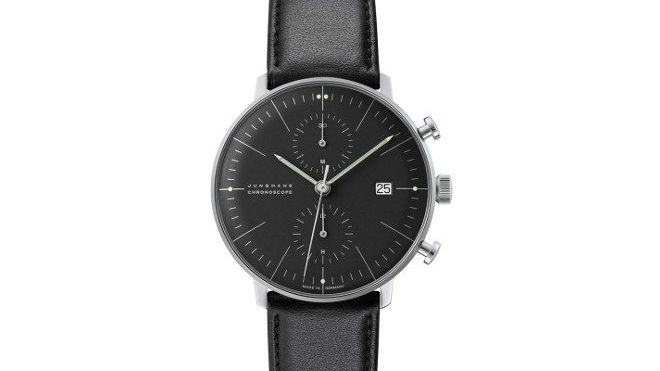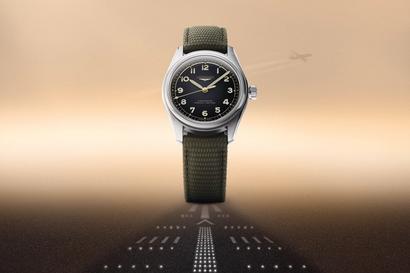

In Depth: Junghans Max Bill Chronoscope
- Words: Charlie Thomas
To many people’s surprise, Junghans have been around since 1861. Amazingly, this German watch brand have been producing clock components and timepieces since then, meaning that, longevity-wise they more than hold their own with the truly elite.
They are and have always been based in the south-west German town of Schramberg, a modest village of just 22,000 inhabitants, all of which would have grown up with the sound of the Junghans clock ticking away in the background. When Junghans first started out, they produced some of the finest, most reliable components for external companies, but it didn’t take look for them to manufacture their own complete clocks. Such was the proficiency and reliability of Junghans manufacturing process, that by the turn of the century they were the largest watch factory in the world, with 3,000 skilled workers producing over three million watches a year.
, The Junghans factory in Schramberg
Sizeable growth, expansion and constant improvement meant Junghans began to produce their own movements in the mid 1930s. This was the perfect base for further developments, which saw a chronograph introduced in the late 1940s and a number of chronometer timepieces in the mid 1950s.
It was also during this time that Junghans began development of a timepiece that would come to define them. They commissioned celebrated Swiss artist Max Bill to design a watch that was both stylish and functional, and he came up with a timepiece that today is Junghans’ signature.
, Junghans Max Bill Chronoscope Ref. Nr. 027/4003.44
The Max Bill family of watches is virtually unchanged today from its 1950s counterparts, at least in terms of design. The same slim, pencil hands, thin bezel and domed plexiglass are all present, giving the watch a decidedly vintage feel, which will please those with a harking for the old school.
The Junghans Max Bill Chronoscope is the sportiest timepiece in the collection, especially when paired with a steel milanaise mesh bracelet. Its dial comes in two variations. The first is decidedly more cluttered with its outer seconds dial and hour markers and numbers. The second is cleaner; its chronograph dials are pared back and its dial makes do without the extra numbers.
, Junghans Max Bill Chronoscope Ref. Nr. 027/4601.00
Where both watches deviate from their 1950s cousins though is on the inside. They feature Junghans’ calibre J880.2, which is a highly accurate self-winding movement that makes the value of the watch that much more appealing.
Costing £1,550, the Junghans Max Bill Chronoscope represents great value for money. The watch’s main selling point is its design, which isn’t a bad strategy given that it’s downright stunning but, when you factor in the brand’s heritage as well as the mechanical movement and choice of smart strap or bracelet options, you start to realise that what you’re looking at is a true modern classic.
For more information, visit Junghans’ website by clicking here.


